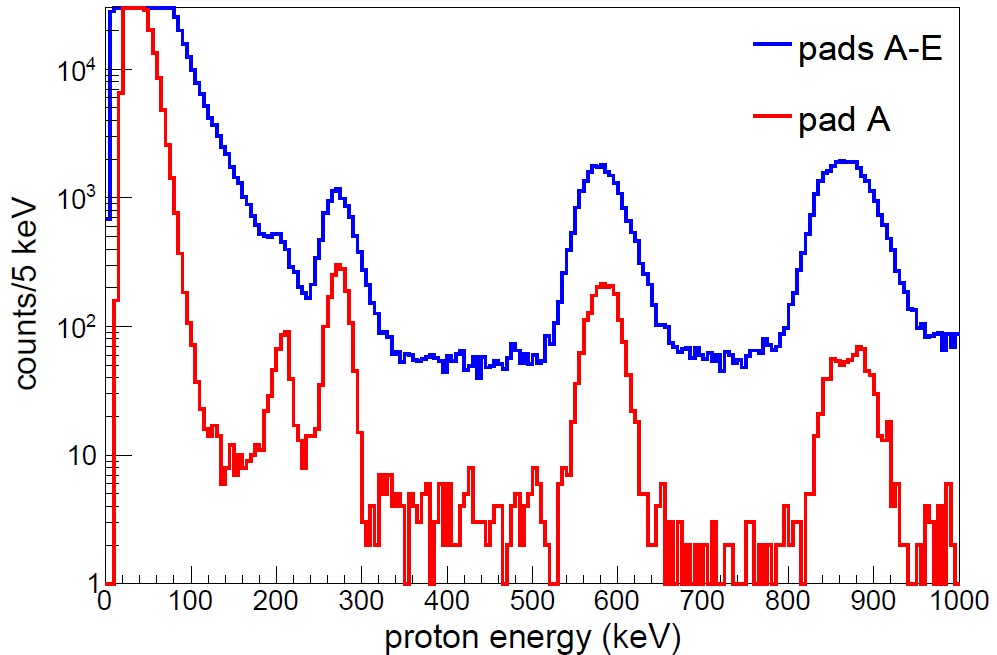NSCL’s GADGET produces First Science
NSCL’s new Gaseous Detector with Germanium Tagging (GADGET) has published its first scientific results in the field of nuclear astrophysics. The system is comprised of the custom-designed Proton Detector, which incorporates a Micromegas structure fabricated at CERN, surrounded by NSCL’s existing Segmented Germanium Array (SeGA). The Proton Detector is used to detect tiny branches of low-energy protons emitted following beta decay. SeGA is used to simultaneously detect gamma rays from those decays with high resolution. Together, this provides detailed information on key proton-capture resonances in nuclear reactions that influence exploding stars.
The first GADGET experiment was motivated by the radioactive isotope sodium-22, which is produced and ejected during stellar explosions called novae, before decaying in space over several years. Space-based gamma-ray telescopes are expected to detect those decays in the next decade. NSCL produced an intense source of beta-decaying aluminum-23, which populated the sole resonance that can destroy some of the sodium-22 while it is being produced in novae. By measuring how often the resonance emits a proton rather than a gamma ray, the strength of the resonance could be calculated. The GADGET collaboration measured the probability of proton emission to be a factor of five lower than previous measurements. This was found to have a large impact on the amount of sodium-22 produced in nova models.
GADGET has already been used to acquire data using three other beams to address different scientific problems and those data are under analysis. An upgrade of the Proton Detector into a time projection chamber is currently underway providing the option to image the tracks of protons and other charged particles in certain experiments.

Figure: Proton spectra from aluminum-23 beta decay measured using the GADGET detector. The peak of astrophysical interest is at approximately 200 keV.



